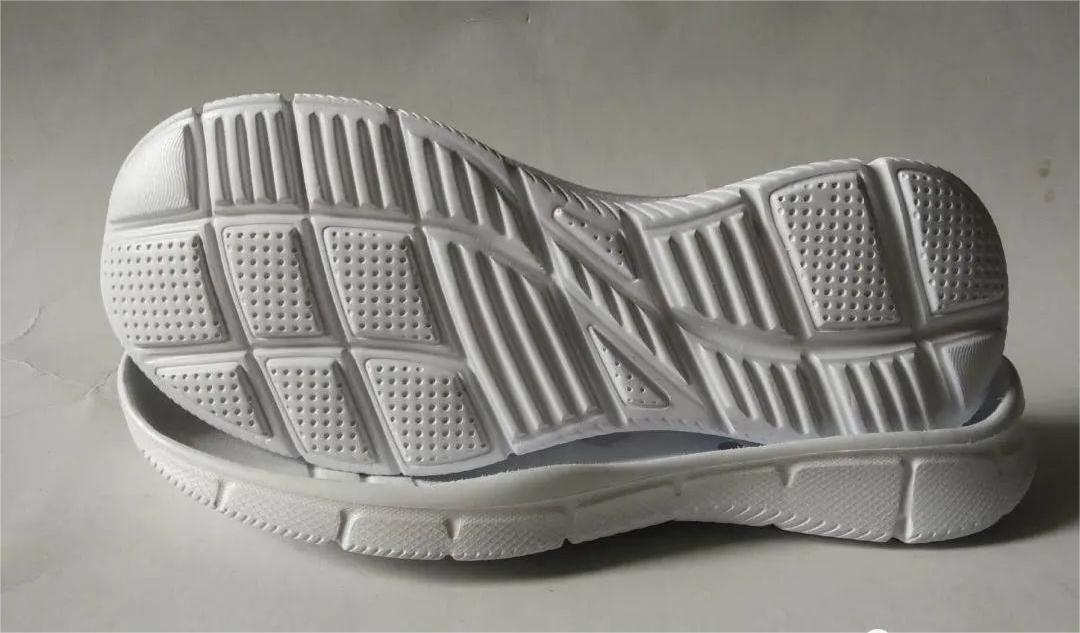One of the common materials used in sneaker midsoles is EVA, but there are two types of midsoles called PHYLON (Phylon) and EVA midsoles. Both midsoles are actually made from EVA, but generally speaking EVA midsoles refer to primary foam EVA material, while Phylon midsoles refer to secondary foam EVA material.

The EVA midsole and PHYLON midsole are both made from EVA, but the manufacturing process is different, making the two materials different in terms of performance.

The Nike Quest 3.0 uses the PHYLON midsole.
In terms of cost, PHYLON is a secondary foam, whereas EVA is a primary foam, so PHYLON costs a lot more than EVA.
Here we take you through the EVA material and the primary and secondary foam process.
A, EVA material introduction
EVA (Ethylene Vinyl Acetate vinyl acetate copolymer) material is made of ethylene (ET) and vinyl acetate (VA) copolymerization, through the high-pressure ontology polymerization process to form a polymer compound.
In terms of product performance control, EVA mainly relies on changing the process conditions (reaction temperature and pressure), the amount of modifier injection and vinyl acetate (VA) injection to regulate the melt index (MI) and vinyl acetate (VA) content of the product, forming different grades of products for different applications.
EVA belongs to ethylene products, itself chemically stable, and the molecules in the VA molecular group has oxidation resistance, chemical corrosion resistance, so EVA material overall chemically stable, and to a considerable extent, resistant to seawater, grease, acid, alkali and other chemicals corrosion. Because of this, its long service life, antibacterial, non-toxic, odourless, non-polluting, is a rare environmentally friendly material.
EVA’s molecular chain in the introduction of vinyl acetate monomer, reduce the crystallinity, improve the elasticity, flexibility, impact resistance, filler compatibility, heat sealing, transparency and other properties.
Therefore, in terms of shoe materials, EVA material better than other vinyl products, become one of the common materials used in sports shoes midsole.
Second, EVA primary foam process
The material is injected/injected into the mould and then heated at a high temperature to form the midsole of the shoe, which is called a foam midsole, also known as EVA shoe midsole.
EVA footwear common primary foaming process: traditional flat large foam, small foam in the mold, injection cross-linked foam and in recent years very popular supercritical foam.
Specific links can be poked to read: EVA footwear foaming process inventory
Three, PHYLON midsole process
After injecting the material into the mould, the shoe midsole is burned and shaped through two high-temperature heating, which is known as the secondary foam midsole, which is often referred to as the PHYLON midsole.
The EVA secondary foaming process is the process of grinding off the skin of the rough embryo, pressing it into the finished mould and then heating and cooling the product in two steps.
Heating temperature at 125-135 is more appropriate, pressure 50KG / square CM, heating for a certain period of time and then water-cooled, take out is the second foam midsole.
Overall EVA technology is relatively mature enough, just start wearing shoes feel very soft, giving people a great first feeling, but over time, it may feel like the bottom of the shoe out of a footprint, the performance has also been greatly reduced. PHYLON, on the other hand, is made of EVA, but the process is much more complicated and the cost is much more expensive. The performance is much better in all aspects.
It should be noted that this does not mean that EVA is worse than PHYLON, it can be said that the performance of PHYLON under the same process + material is better than EVA, but due to the difference in process and material, some EVA has better performance than the ordinary PHYLON midsole. In addition to PHYLON midsoles and EVA midsoles, PU midsoles are also very common. The biggest advantage of PU midsoles is that they are more elastic and tough, but the disadvantage is that they are denser and less resistant to yellowing and hydrolysis.











